A Breakdown of Self-Defense Training in Different Martial Art Styles
In a world where personal safety is paramount, understanding self-defense is not just a skill but a vital component of self-empowerment. Various martial arts offer unique approaches to self-defense training, each with its own techniques, philosophies, and practical applications. Whether you're looking to build confidence, improve your physical fitness, or learn how to protect yourself, exploring these diverse styles can open up a world of possibilities. From the striking prowess of karate to the ground-fighting finesse of Brazilian Jiu-Jitsu, each martial art presents a distinctive path to mastering self-defense. So, let’s dive into the fascinating realm of martial arts and uncover how they can equip you with the tools you need to stay safe and secure.
Self-defense is not just about throwing punches or grappling with an attacker; it encompasses a range of techniques and strategies designed to protect oneself from harm. At its core, self-defense training teaches individuals how to assess situations, recognize potential threats, and respond effectively. It's crucial to understand the fundamental principles that guide self-defense, including the legal considerations that vary by region. For instance, knowing when it is legally permissible to use force in self-defense can significantly impact your approach and mindset during training. Moreover, self-defense is as much about mental preparedness as it is about physical capability. Developing a self-defense mindset involves being aware of your surroundings, understanding your limits, and cultivating the confidence to act decisively when necessary.
Karate, one of the most popular martial arts worldwide, offers a plethora of striking techniques that can be highly effective for self-defense. With its emphasis on punches, kicks, and blocks, karate equips practitioners with the ability to defend themselves against various types of attacks. Key karate moves, such as the front kick and the roundhouse kick, are designed not just for sport but for real-life applications. Imagine facing an aggressive assailant; a well-placed kick can create the necessary distance to escape. The beauty of karate lies in its simplicity and effectiveness, making it accessible for individuals of all ages and skill levels.
In karate, blocking and evasion techniques are essential for avoiding attacks. These skills allow practitioners to deflect incoming strikes and create opportunities for counterattacks. For example, a simple downward block can neutralize a punch, while sidestepping can help you evade an attack altogether. To enhance these defensive skills, practitioners often engage in drills that improve their reflexes and situational awareness. Regular practice not only builds muscle memory but also instills a sense of confidence in one’s ability to react swiftly in dangerous situations.
Effective footwork is the backbone of martial arts, and karate is no exception. Good footwork allows you to maintain balance, positioning, and distance from your opponent. Think of it as the foundation of a sturdy house; without it, everything else can crumble. In karate, practitioners learn to move fluidly and strategically, enabling them to launch attacks or retreat as needed. Mastery of footwork can make all the difference in a self-defense scenario, allowing you to evade attacks while remaining ready to counter.
Powerful strikes are a hallmark of karate, emphasizing the importance of generating force in punches and kicks. The mechanics of delivering a powerful blow involve proper stance, technique, and timing. When executed correctly, a well-aimed strike can incapacitate an attacker, giving you the chance to escape. Practicing power strikes not only enhances your self-defense capabilities but also builds physical strength and confidence.
Combining various techniques in karate enhances versatility in self-defense. By blending strikes, blocks, and footwork, practitioners can adapt to different attack scenarios. This dynamic approach allows individuals to respond effectively to multiple types of attacks, whether they come from an assailant who is aggressive or one who is trying to grapple. The ability to think on your feet and switch between techniques is vital in real-life situations, where unpredictability is the norm.
Brazilian Jiu-Jitsu (BJJ) takes a different approach to self-defense, focusing primarily on ground fighting and submission techniques. In a world where many altercations end up on the ground, understanding how to defend yourself in this scenario is crucial. BJJ emphasizes control and leverage over brute strength, making it an effective choice for individuals of all sizes. Practitioners learn to use their opponent's weight and movements against them, allowing for effective defense even in seemingly disadvantageous positions.
Understanding submissions and escapes is vital in BJJ. Techniques such as the armbar or rear-naked choke can be game-changers in a self-defense situation, allowing you to neutralize an attacker without relying on sheer strength. Additionally, knowing how to escape from holds or grapples can provide you with the upper hand, enabling you to regain control and escape to safety.
Situational awareness is a cornerstone of BJJ training. Practitioners develop a keen sense of their surroundings and potential threats while practicing ground defense techniques. This heightened awareness not only improves one's ability to respond to attacks but also helps in avoiding confrontations altogether. Being aware of your environment can be the difference between a safe exit and a dangerous situation.
- What is the best martial art for self-defense? The best martial art for self-defense depends on personal preference, physical ability, and the types of situations you want to prepare for. Karate focuses on striking, while Brazilian Jiu-Jitsu emphasizes ground control.
- Do I need to be fit to start martial arts training? No, martial arts can be practiced by individuals of all fitness levels. Most schools provide classes tailored to beginners and gradually increase intensity.
- How long does it take to learn self-defense techniques? The time it takes to learn self-defense techniques varies by individual and the frequency of training. Consistent practice can lead to noticeable improvements within a few months.

Understanding Self-Defense
Self-defense is more than just a physical response to an attack; it embodies a comprehensive understanding of techniques, strategies, and legal implications that empower individuals to protect themselves effectively. At its core, self-defense involves the ability to recognize potential threats and respond appropriately, utilizing both mental and physical skills. It's about creating a mindset that prioritizes safety and awareness while also equipping oneself with the necessary tools to handle dangerous situations.
When delving into the world of self-defense, it's crucial to grasp the fundamental principles that guide these practices. For instance, self-defense is often categorized into two main types: preventive self-defense and reactive self-defense. Preventive self-defense focuses on avoiding confrontations altogether, using awareness and de-escalation tactics, while reactive self-defense comes into play when an attack is unavoidable.
Legal considerations also play a significant role in self-defense training. It's essential for practitioners to understand the laws surrounding self-defense in their jurisdiction. For example, the concept of "reasonable force" dictates how much force is permissible in response to an attack. This can vary widely from one place to another, making it crucial for individuals to educate themselves on local laws.
Furthermore, effective self-defense training incorporates various elements, including:
- Awareness: Being aware of your surroundings and recognizing potential threats is the first step in self-defense.
- De-escalation: Learning how to diffuse a situation verbally can often prevent physical confrontation.
- Physical Techniques: These include striking, grappling, and escaping maneuvers that can be employed when necessary.
- Legal Knowledge: Understanding the laws that govern self-defense is crucial for ensuring that your actions are justified.
In summary, self-defense is a multifaceted discipline that goes beyond mere physical confrontation. It combines mental preparedness with practical skills, all while navigating the legal landscape of personal safety. By engaging in self-defense training, individuals not only learn how to protect themselves but also gain confidence and a sense of empowerment that transcends the physical aspects of self-defense.

Karate Techniques for Self-Defense
Karate is not just about the flashy kicks and punches you see in movies; it is a comprehensive martial art that equips practitioners with a variety of self-defense techniques. The beauty of karate lies in its ability to empower individuals with the skills needed to protect themselves in real-life situations. From powerful strikes to defensive maneuvers, karate offers a toolbox of techniques that can be tailored to various scenarios. In this section, we will dive into some key karate moves and their practical applications, ensuring you're well-prepared should the need arise.
One of the most striking aspects of karate is its emphasis on striking techniques. These include punches, kicks, and knee strikes that can be incredibly effective in self-defense. Imagine being able to deliver a powerful punch that not only stuns but also creates an opportunity for escape. A well-placed front kick can keep an aggressor at bay, while a swift roundhouse kick can incapacitate them momentarily. The key here is not just to strike but to understand the mechanics behind these movements, ensuring maximum effectiveness when it counts.
Blocking and evasion techniques are the backbone of karate's defensive strategy. When faced with an attack, knowing how to effectively block or evade can mean the difference between safety and danger. For instance, a simple downward block can deflect an incoming punch, while a well-timed sidestep can help you avoid a tackle. Practicing these techniques regularly through drills enhances your reflexes and situational awareness, allowing you to react instinctively. Think of it as a dance; the better you know the steps, the more fluidly you can move through any situation.
Effective footwork is crucial in martial arts, and karate is no exception. Good footwork allows you to maintain balance, create distance, and position yourself advantageously. In self-defense, being able to move swiftly and decisively can help you evade attacks or close the gap when necessary. For example, practicing the step-and-slide technique enables you to shift your weight and adjust your position without losing your balance. This agility not only enhances your offensive capabilities but also fortifies your defensive posture, making you a more formidable opponent.
Karate emphasizes the importance of generating power in your strikes. It's not just about swinging wildly; it's about harnessing your body mechanics to deliver impactful blows. Techniques such as the hip twist and the snap of the wrist are essential in developing this power. When executed correctly, a punch or kick can deliver enough force to incapacitate an attacker, giving you the upper hand in a threatening situation. Understanding how to generate this power can transform your self-defense capabilities from merely defensive to assertively protective.
One of the most effective strategies in karate is the ability to combine various techniques. This versatility enhances your self-defense repertoire, allowing you to adapt to different types of attacks. For instance, a combination of a block followed by a counter-punch can catch an attacker off guard. When you blend strikes, blocks, and footwork fluidly, you create a dynamic defense that can handle multiple threats. It’s like being a painter with a full palette; the more colors you have, the more beautiful and complex your masterpiece can be.
In conclusion, karate is a powerful form of self-defense that equips individuals with essential techniques for personal safety. By mastering striking, blocking, evasion, footwork, and the ability to combine techniques, practitioners can navigate various real-life situations with confidence. Remember, self-defense is not just about physical techniques; it’s about the mindset of empowerment and awareness that karate instills in its students.
- What is the best karate technique for self-defense? Each technique has its strengths, but powerful strikes like the front kick and side punch are often recommended for self-defense.
- How can I practice blocking and evasion at home? You can practice these techniques with a partner or against a heavy bag to simulate real attacks.
- Is karate effective for women’s self-defense? Absolutely! Karate provides women with the skills and confidence to defend themselves effectively.
- How long does it take to become proficient in karate? Proficiency varies by individual, but consistent practice over several months can lead to significant improvements.
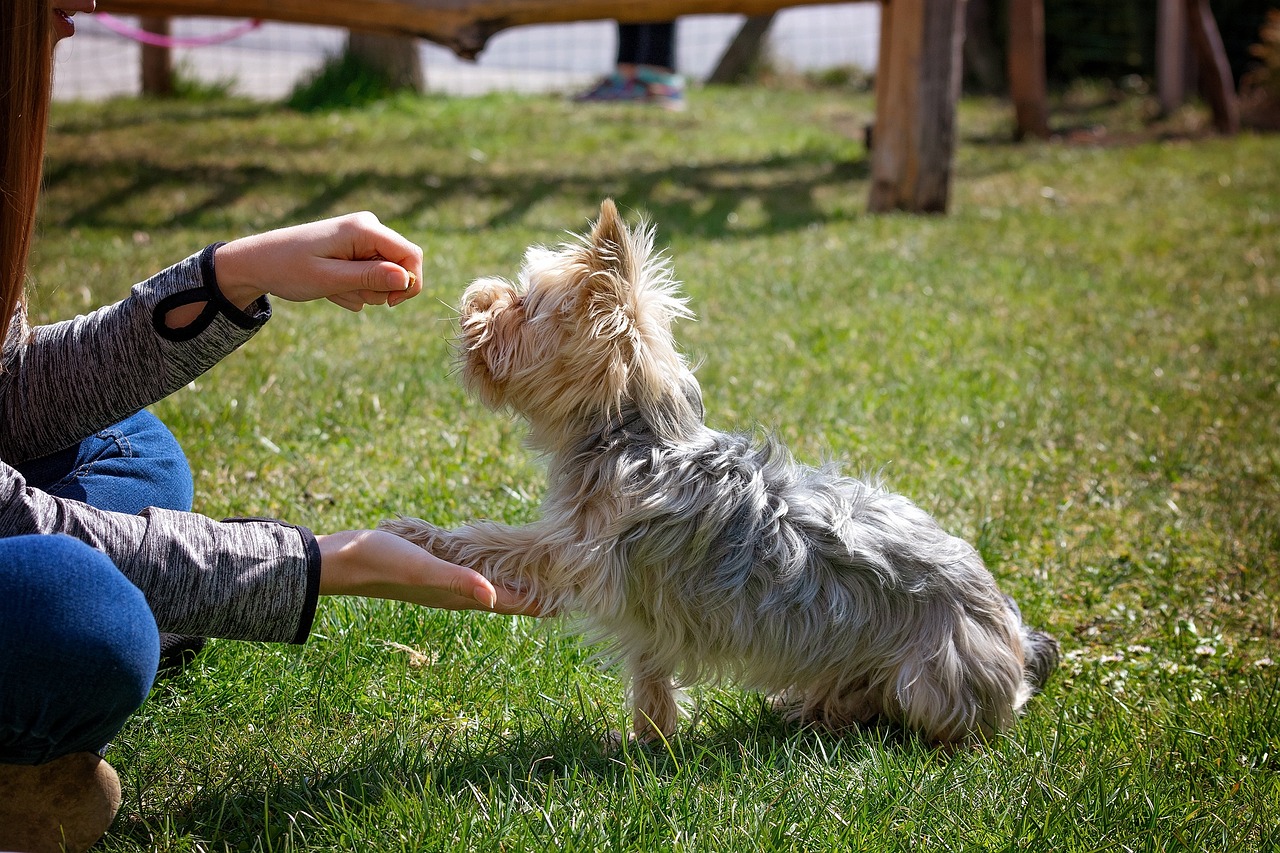
Blocking and Evasion
When it comes to self-defense, are two fundamental skills that every martial artist should master. Imagine being in a situation where an attacker is coming at you with a flurry of punches. Your immediate instinct might be to freeze or panic, but this is where the training in karate comes into play. By learning effective blocking techniques, you can protect yourself from incoming strikes while simultaneously preparing for a counterattack. It's like having a shield that not only deflects blows but also opens up opportunities for you to respond.
Blocking techniques in karate are designed to absorb and redirect an opponent's force. For instance, a well-executed block can not only prevent an attack from landing but can also create an opening for a counterstrike. Common blocking techniques include the high block, low block, and inward block, each serving specific purposes based on the angle and type of attack. Practicing these blocks in various scenarios helps build muscle memory, allowing you to react instinctively in real-life situations.
Evasion, on the other hand, is about movement. Think of it as a dance where you are constantly shifting your weight and position to avoid being hit. Techniques such as slipping, ducking, and sidestepping are crucial for evading attacks. By mastering these movements, you can create space between you and your attacker, making it significantly harder for them to land a hit. For example, if someone throws a punch, a quick sidestep can not only let you dodge the strike but also put you in a position to counter with your own attack.
To enhance your blocking and evasion skills, consider incorporating drills into your training routine. Here are a few effective drills:
- Partner Drills: Work with a partner who throws controlled punches while you practice your blocks and evasions.
- Shadow Sparring: Visualize an opponent and practice your movements as if you were in a real fight, focusing on both blocking and evasion.
- Footwork Drills: Use agility ladders or cones to improve your footwork, allowing for quicker evasion and positioning.
Incorporating these techniques into your training not only boosts your confidence but also enhances your overall effectiveness in self-defense situations. Remember, the goal is not just to react but to anticipate and respond with precision. By honing your blocking and evasion skills, you become a more formidable opponent, capable of defending yourself against various attacks.
Q: How long does it take to learn effective blocking and evasion techniques?
A: The time varies for each individual, but with consistent practice, you can start feeling comfortable with basic techniques within a few months.
Q: Can blocking and evasion techniques be applied in real-life situations?
A: Absolutely! These techniques are designed to be practical and can be applied effectively in real-life self-defense scenarios.
Q: What should I do if I struggle with blocking and evasion?
A: It's essential to practice regularly and seek feedback from instructors. Consider focusing on one technique at a time and gradually building your skills.
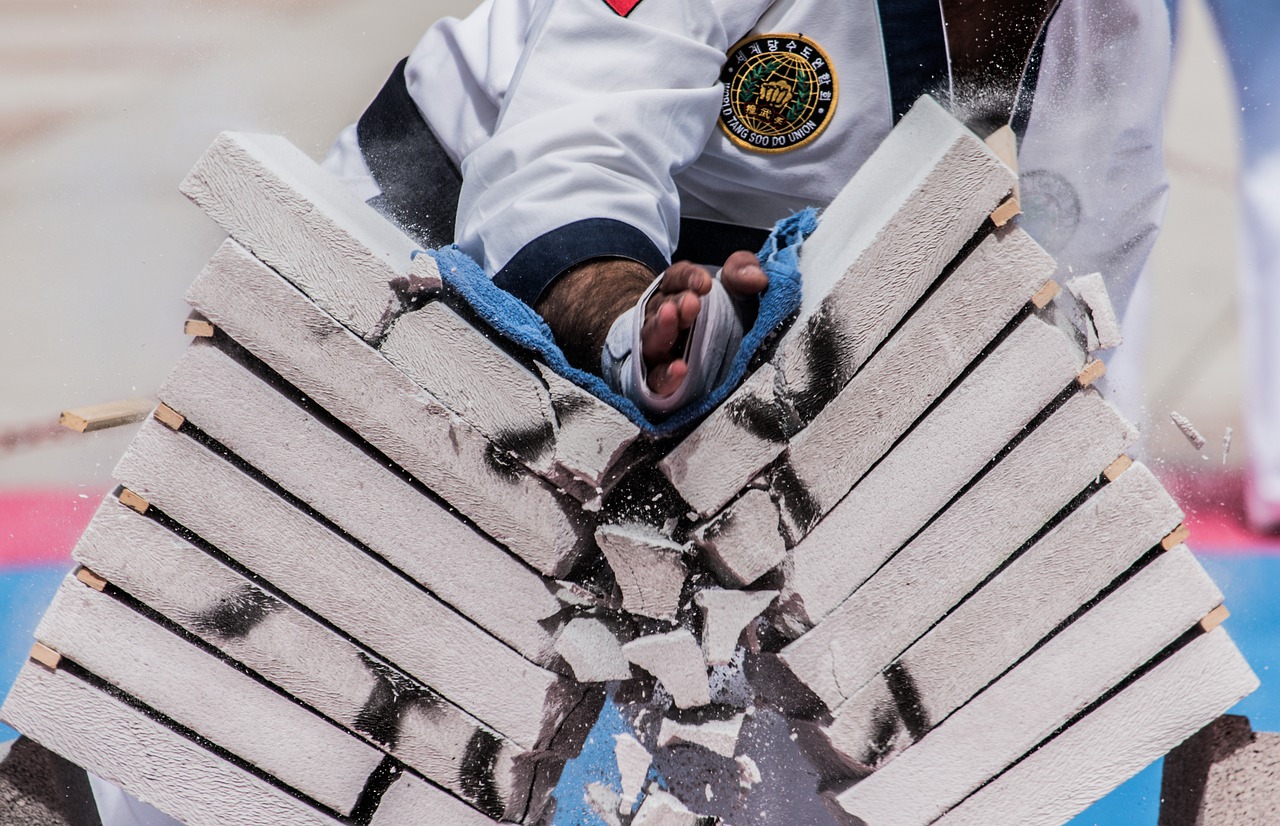
Footwork Fundamentals
When it comes to martial arts, footwork is often the unsung hero of effective self-defense. It’s the foundation upon which all techniques are built, and mastering it can significantly enhance your combat capabilities. Imagine a dancer on stage; their ability to move fluidly and gracefully is what captivates the audience. Similarly, in karate, your footwork can dictate the rhythm of a confrontation, allowing you to evade attacks, create distance, or close in on an opponent.
Effective footwork in karate isn’t just about moving from point A to point B; it’s about maintaining balance while positioning yourself advantageously. For instance, when you throw a punch, your weight should shift seamlessly to ensure maximum power and stability. This is where the concept of the “triangle stance” comes into play. By keeping your feet shoulder-width apart and your knees slightly bent, you create a sturdy base that allows for quick movements in any direction.
Moreover, footwork drills are essential for developing muscle memory. Practicing movements like the shuffle, pivot, and step-back can prepare your body to respond instinctively in real-life situations. Here are some fundamental footwork techniques to incorporate into your training:
- Step and Slide: This technique allows you to quickly close the distance between you and your opponent or create space when needed.
- Pivoting: By pivoting on your lead foot, you can change angles and evade incoming strikes, making you a harder target to hit.
- Shuffling: This quick lateral movement helps you maintain your position while being able to react to your opponent's actions.
Incorporating these techniques into your practice not only enhances your defensive capabilities but also improves your offensive strategies. Think of your footwork as the canvas upon which your techniques are painted. The more skilled you are at moving, the more effective your strikes will become.
To further illustrate the importance of footwork, consider this: in a self-defense scenario, the ability to move out of the way of an attack is often more valuable than any strike you can throw. By mastering your footwork, you can create openings for counterattacks while simultaneously protecting yourself. It’s like playing chess—anticipating your opponent's moves allows you to stay one step ahead.
Ultimately, footwork is not just about physical movement; it's about mental agility as well. It requires awareness of your surroundings and the ability to read your opponent's intentions. As you train, focus on integrating footwork drills into your routine. The more you practice, the more natural these movements will become, allowing you to react swiftly and effectively in any situation.
Q1: Why is footwork so important in martial arts?
A1: Footwork is crucial because it allows martial artists to maintain balance, evade attacks, and position themselves effectively for both offense and defense.
Q2: How can I improve my footwork?
A2: Regular practice of drills such as shuffling, pivoting, and stepping can significantly enhance your footwork. Additionally, shadowboxing can help you integrate footwork into your techniques.
Q3: Is footwork the same in all martial arts?
A3: While the fundamentals of footwork may share similarities, each martial art has its unique techniques and applications. It's essential to adapt your footwork to suit the specific style you practice.
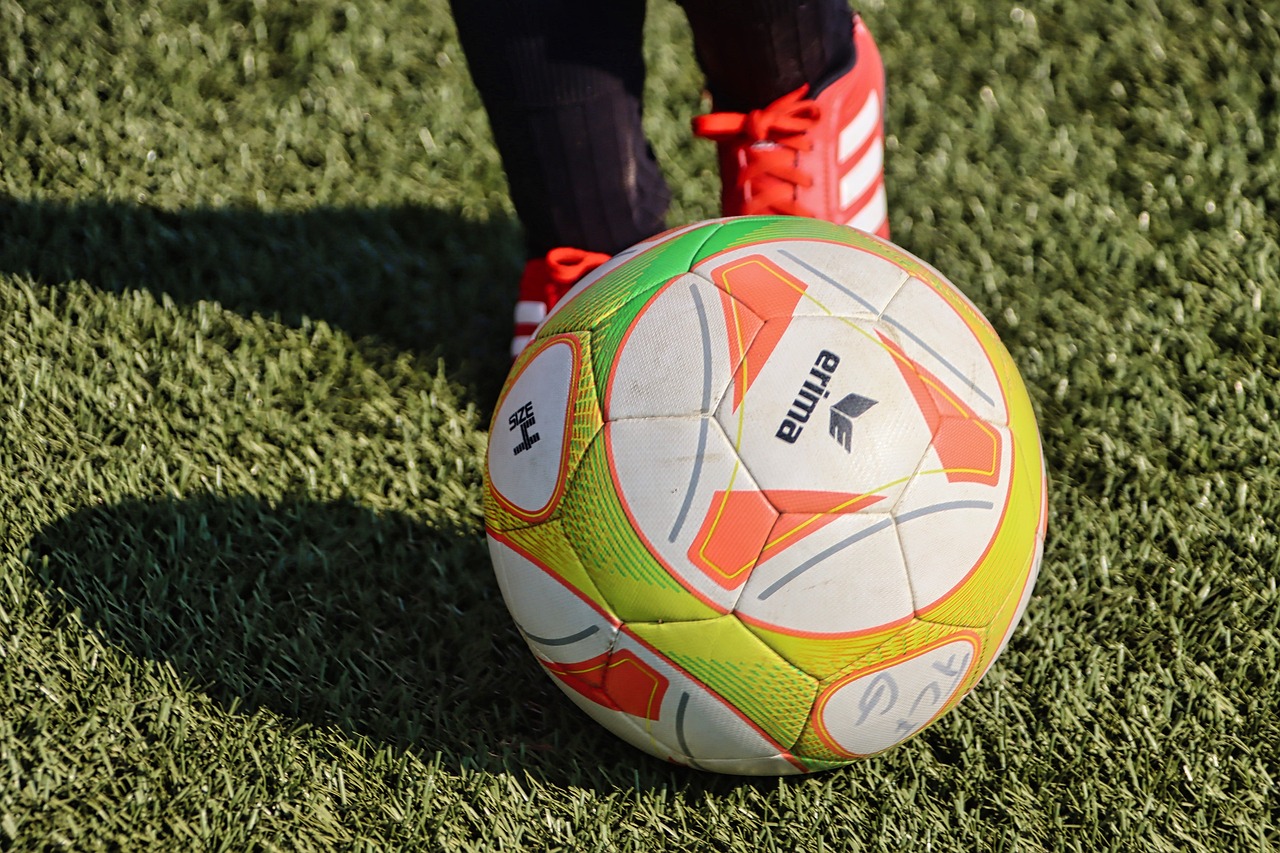
Power Strikes
When it comes to self-defense, the importance of powerful strikes in karate cannot be overstated. These strikes are not just about brute force; they are about technique, precision, and timing. Imagine a well-placed punch or kick landing on an assailant, effectively incapacitating them and giving you the chance to escape. This is the essence of power strikes in karate. The mechanics behind generating power involve a combination of body alignment, weight transfer, and the use of your core muscles. It's like a tightly coiled spring that releases its energy in a split second, delivering a force that can be both surprising and explosive.
To truly harness the power of your strikes, it is essential to understand the following key elements:
- Body Mechanics: Proper alignment of your body is crucial. This means your feet, hips, and shoulders should be aligned to maximize force. Think of it as a chain reaction where each part of your body contributes to the overall power of the strike.
- Weight Transfer: Shifting your weight from the back foot to the front foot during a punch or kick can significantly increase its impact. This transfer is akin to winding up before throwing a baseball—it's all about that initial momentum.
- Core Engagement: Your core muscles play a vital role in generating power. Engaging your core not only stabilizes your body but also adds force to your strikes. Picture a whip; the crack you hear is a result of the energy built up and released in a quick motion.
In practice, karate practitioners often focus on drills that enhance their striking power. These drills may include hitting heavy bags, practicing on focus mitts, or engaging in partner drills where they can apply techniques in a controlled environment. Each of these methods allows the martial artist to refine their technique while also building the strength and speed necessary for effective self-defense.
Moreover, the psychological aspect of delivering power strikes is equally important. Confidence plays a significant role in how effective a strike can be. When you believe in the power of your technique, it translates into your execution. This mental aspect is often developed through consistent practice and sparring, where practitioners learn to trust their instincts and react swiftly to threats.
In conclusion, mastering power strikes in karate is not just about hitting hard; it's about understanding the intricacies of technique and body movement. It's about developing a mindset that empowers you to defend yourself effectively. As you train, remember that each strike is a step toward not only physical empowerment but also mental resilience. So, whether you’re practicing solo or with a partner, focus on the quality of your strikes, and watch as your confidence and effectiveness grow.
Q1: How can I improve my striking power in karate?
A1: Focus on your body mechanics, practice weight transfer, and engage your core muscles during strikes. Regular drills on heavy bags and with partners can also help enhance your power.
Q2: Is it necessary to be strong to deliver powerful strikes?
A2: Not necessarily. While strength can help, technique and proper mechanics are more critical in delivering effective strikes. Many practitioners find that with good technique, they can generate significant power regardless of their size.
Q3: How often should I practice power strikes?
A3: Consistency is key. Incorporate power striking drills into your regular training sessions, aiming for at least a few times a week to see improvement.
Q4: Can power strikes be effective in real-life self-defense situations?
A4: Absolutely! Effective power strikes can incapacitate an attacker, giving you the opportunity to escape. However, it's essential to practice these techniques in realistic scenarios to build confidence and effectiveness.
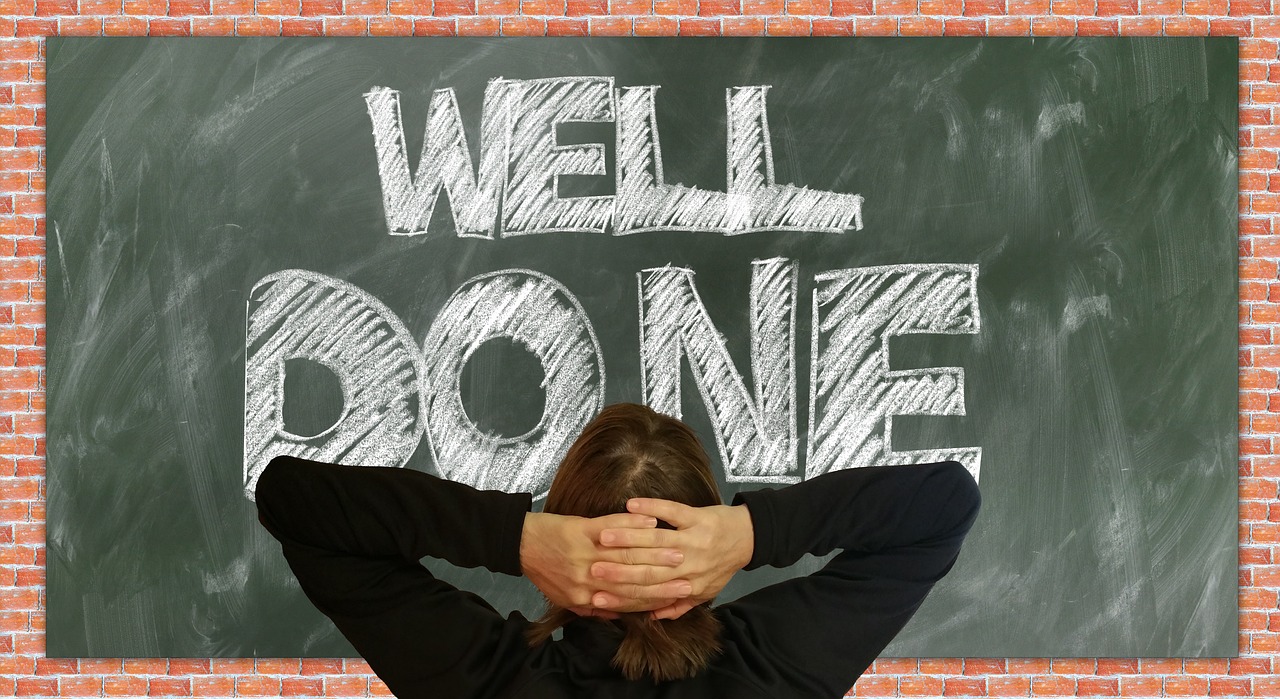
Combining Techniques
When it comes to self-defense, the ability to combine techniques can be a game-changer. Imagine trying to defend yourself against an attacker; relying solely on a single move can leave you vulnerable. Instead, the art of blending various techniques—strikes, blocks, and footwork—creates a more dynamic and adaptable defense strategy. This is where karate truly shines. By learning to seamlessly integrate different moves, practitioners can respond effectively to a wide range of attacks.
For instance, consider a scenario where you face an aggressive opponent. Instead of just throwing a punch, you might first execute a block to deflect their attack, then follow up with a powerful kick. This combination not only protects you but also puts you in a better position to counterattack. The fluidity of combining techniques allows for a more instinctual response, making it easier to adapt to unexpected situations.
Moreover, the mental aspect of combining techniques is equally important. Practitioners must train their minds to think on their feet, assessing the situation and deciding which combination of moves will be most effective. This requires extensive practice and a deep understanding of the mechanics behind each technique. For instance, a practitioner might develop a go-to combination of a jab, a cross, and a roundhouse kick that becomes second nature during a confrontation.
To illustrate the effectiveness of this approach, let’s take a look at a simple table that outlines common combinations in karate:
| Combination | Description |
|---|---|
| Jab + Cross | A quick one-two punch to create distance and set up a follow-up attack. |
| Front Kick + Side Kick | Using a front kick to disrupt your opponent, followed by a side kick to maintain distance. |
| Block + Hook | Deflecting an incoming strike and immediately countering with a hook punch. |
Additionally, practicing these combinations in drills can significantly enhance your muscle memory. The more you train, the more instinctive these combinations become. Imagine driving a car; at first, you focus on every action, but with practice, it becomes an automatic process. In the same way, combining techniques in karate transforms your self-defense skills from conscious effort to instinctual reaction.
Ultimately, the essence of combining techniques lies in versatility. No two confrontations are the same, and the ability to adapt your responses can be the difference between safety and harm. So, whether you’re a beginner or a seasoned martial artist, always remember that the power of self-defense lies in your ability to combine techniques effectively and creatively.
- What is the importance of combining techniques in self-defense?
Combining techniques allows for a more adaptable and effective response to various attacks, making your self-defense strategy more robust. - How can I practice combining techniques?
Regular drills and sparring sessions can help develop muscle memory for specific combinations, enhancing your instinctual responses. - Are there specific combinations I should focus on?
Yes, starting with fundamental combinations like jabs, crosses, and kicks can build a solid foundation for more advanced techniques.
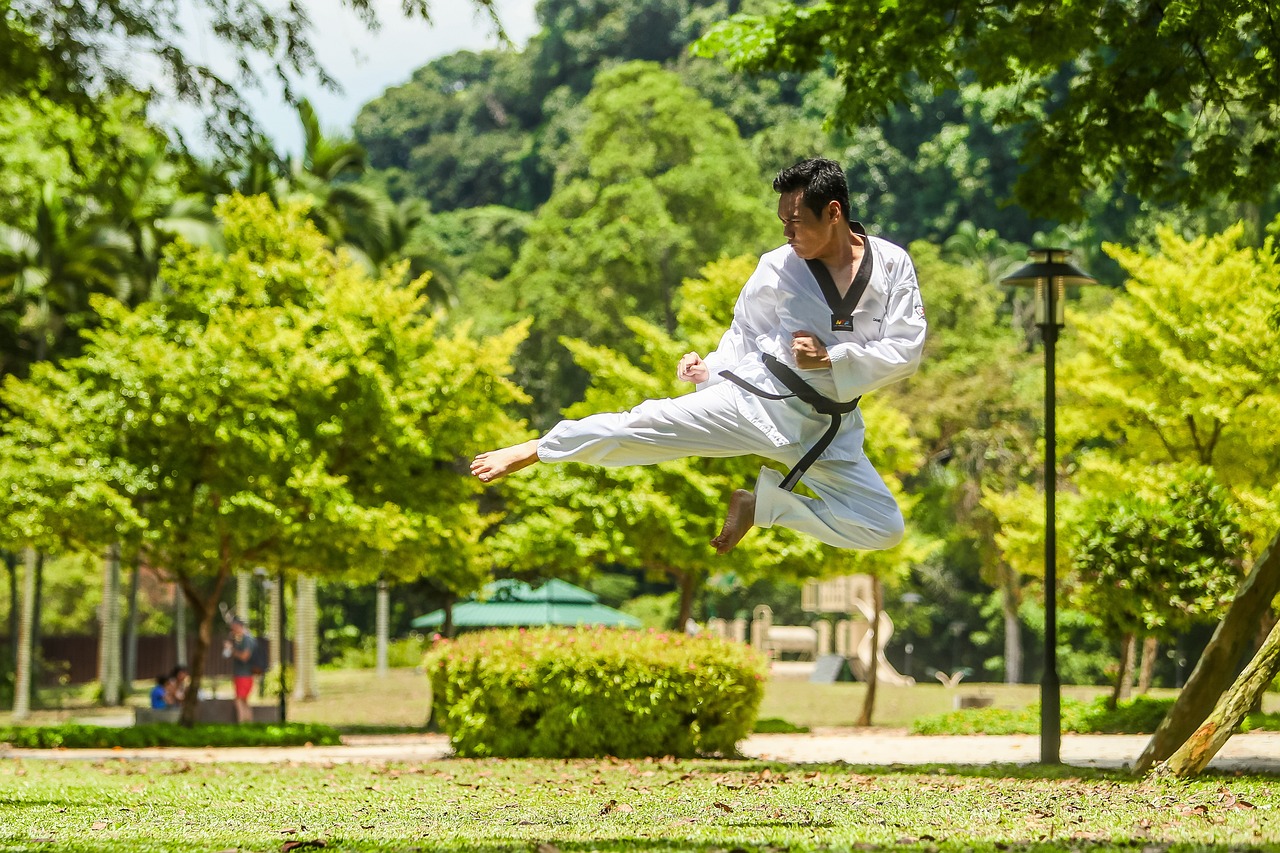
Brazilian Jiu-Jitsu for Ground Defense
When it comes to self-defense, Brazilian Jiu-Jitsu (BJJ) stands out as a unique and effective martial art that emphasizes ground fighting and submission techniques. Unlike many other martial arts that focus on striking, BJJ teaches practitioners how to control and subdue an opponent on the ground, making it particularly useful in real-life altercations where fights often end up on the floor. The essence of BJJ lies in the principle that a smaller, weaker person can successfully defend themselves against a larger, stronger opponent by using leverage and technique rather than brute strength.
BJJ is built around a series of positions, movements, and submissions that allow individuals to maintain control over an adversary. The training often involves sparring, which helps practitioners learn how to apply techniques in realistic scenarios. This hands-on approach not only builds physical skills but also enhances mental acuity, enabling students to think critically and adapt to various situations. For instance, a practitioner might find themselves in a precarious position, but with the right training, they can execute a sweep or guard pass to regain control.
Understanding submissions and escapes is vital for anyone training in BJJ. Submissions are techniques designed to force an opponent to submit, often through joint locks or chokeholds. In a self-defense context, knowing how to apply these techniques can be a game-changer. For example, a well-executed rear-naked choke can neutralize an attacker quickly and effectively. On the flip side, escapes are equally important; they allow practitioners to extricate themselves from disadvantageous positions. Techniques such as the bridge and roll or the shrimping escape are fundamental skills that every BJJ student should master.
Situational awareness is crucial in BJJ training. Practitioners develop an acute sense of their surroundings and potential threats while practicing ground defense techniques. This awareness extends beyond the mat; it cultivates a mindset where individuals are more attuned to their environment, making them less likely to be caught off guard in a real-world scenario. For instance, during training, a student learns to recognize the signs of an opponent's intentions, allowing them to react preemptively. This skill is invaluable in self-defense, where being able to anticipate an attack can mean the difference between safety and harm.
Moreover, BJJ training often incorporates drills that simulate real-life situations, adding an extra layer of realism to the practice. For example, practitioners might practice defending against an opponent who is trying to take them down or grapple them into submission. These drills not only enhance technical skills but also build confidence and mental fortitude, essential qualities when faced with a potential threat.
| Technique | Description | Application |
|---|---|---|
| Rear-Naked Choke | A chokehold applied from behind the opponent. | Effective for incapacitating an attacker quickly. |
| Bridge and Roll | A technique to escape from being mounted. | Allows the practitioner to regain a dominant position. |
| Guard Pass | Moving past an opponent's guard to gain a more dominant position. | Essential for controlling the fight on the ground. |
In summary, Brazilian Jiu-Jitsu offers a comprehensive approach to ground defense that emphasizes control, technique, and situational awareness. Whether you're looking to enhance your self-defense skills or simply seeking a new form of physical activity, BJJ provides valuable tools that can empower individuals to protect themselves effectively.
Q: Is Brazilian Jiu-Jitsu suitable for everyone?
A: Yes, BJJ can be practiced by individuals of all ages and fitness levels. The techniques can be adapted to suit each person's capabilities.
Q: How long does it take to become proficient in BJJ?
A: Proficiency in BJJ varies by individual, but consistent training over several months can yield significant improvements in technique and confidence.
Q: Do I need to be physically fit to start BJJ?
A: No, you don't need to be in shape to begin training in BJJ. Many practitioners find that they improve their fitness levels as they train.

Submissions and Escapes
In the world of Brazilian Jiu-Jitsu (BJJ), the concepts of submissions and escapes are essential for effective self-defense, especially when the confrontation goes to the ground. Unlike striking arts, where the focus is often on delivering powerful blows, BJJ emphasizes control, leverage, and technique to gain the upper hand. Think of it as a chess game where every move counts, and the goal is to outsmart your opponent rather than overpower them. This approach is particularly advantageous for individuals who may not possess the physical strength to fend off larger attackers.
Submissions are techniques used to compel an opponent to concede, often through joint locks or chokeholds. These moves can incapacitate an attacker without causing permanent harm, making them ideal for self-defense situations. Some of the most common submissions include:
- Armbar: A joint lock that hyperextends the elbow.
- Rear Naked Choke: A chokehold applied from behind, cutting off blood flow.
- Triangle Choke: A choke executed using the legs to trap the opponent's head and arm.
Each of these techniques requires practice to execute effectively, but when mastered, they can turn the tide in a dangerous situation. The beauty of submissions lies in their ability to neutralize threats without relying on brute strength. Instead, practitioners leverage their body weight and the opponent's movements to gain control.
On the flip side, escapes are equally crucial in BJJ. If you find yourself on the ground and in a compromising position, knowing how to escape can mean the difference between safety and harm. Effective escape techniques allow you to regain a dominant position or simply distance yourself from the threat. Here are a few fundamental escape strategies:
- Bridge and Roll: A technique used to escape from being pinned on your back.
- Hip Escape (Shrimping): A movement that creates space between you and your opponent, facilitating an escape.
- Guard Recovery: Techniques to return to a more favorable position, such as the guard, after being taken down.
Practicing these escapes not only builds confidence but also enhances your overall situational awareness. In a self-defense scenario, being able to quickly assess your surroundings and react appropriately is invaluable. Imagine being caught in a tight spot, and instead of panicking, you instinctively know how to maneuver your body to safety. That’s the power of BJJ training.
In summary, submissions and escapes form the backbone of Brazilian Jiu-Jitsu's approach to self-defense. They teach practitioners to remain calm under pressure and to use technique rather than strength. Whether you’re a seasoned martial artist or a beginner, understanding these concepts can significantly enhance your ability to protect yourself in real-life situations.
1. What is the difference between a submission and an escape in BJJ?
Submissions are techniques used to control an opponent and force them to concede, while escapes are methods to free oneself from a disadvantageous position.
2. Can anyone learn submissions and escapes?
Yes! BJJ is designed to be accessible to people of all sizes and strengths. With practice, anyone can learn effective submissions and escapes.
3. How long does it take to become proficient in BJJ?
Proficiency varies by individual, but consistent training over several months can lead to significant improvements in technique and confidence.
4. Are submissions dangerous?
When practiced under the guidance of a qualified instructor, submissions are safe and designed to control rather than harm an opponent.
5. What should I do if I’m caught in a submission in a real-life situation?
If caught in a submission, focus on staying calm, protecting your airway, and looking for opportunities to escape or create distance.

Situational Awareness in BJJ
Situational awareness is a fundamental aspect of Brazilian Jiu-Jitsu (BJJ) that goes beyond just the physical techniques and submissions. It involves understanding your environment, recognizing potential threats, and being able to predict the actions of both your opponent and any outside factors that may influence the situation. In BJJ, this means being acutely aware of your positioning on the mat, the dynamics of your opponent's movements, and the space around you. Imagine being in a crowded room: while you're focused on your opponent, you also need to be aware of others who might inadvertently interfere with your training or sparring session. This awareness can be the difference between successfully executing a technique and being caught off guard.
One of the key components of developing situational awareness in BJJ is practicing various drills that simulate real-life scenarios. For instance, during sparring sessions, practitioners should not only focus on their own movements but also pay attention to their opponent's body language and intentions. Are they preparing to attack? Are they trying to escape? By honing this skill, you can anticipate moves and react more effectively. Additionally, instructors often emphasize the importance of maintaining a clear line of sight to avoid unexpected surprises, much like a driver needs to keep an eye on the road ahead to navigate safely.
Moreover, situational awareness in BJJ extends to understanding the rules and etiquette of the training environment. Knowing when to engage and when to step back can prevent unnecessary conflicts, both on and off the mat. This awareness can be cultivated through open communication with training partners and instructors, fostering an environment where everyone feels safe and respected. Practicing mindfulness techniques, such as breathing exercises, can also enhance your focus and awareness, allowing you to remain calm and collected during intense sparring sessions.
To further illustrate the importance of situational awareness in BJJ, consider the following table that outlines key factors to keep in mind:
| Factor | Description |
|---|---|
| Opponent's Position | Always be aware of where your opponent is in relation to you. This helps in predicting their next move. |
| Environment | Know your surroundings, including any obstacles or other people that may affect your sparring session. |
| Body Language | Pay attention to your opponent's body movements and expressions to gauge their intentions. |
| Training Etiquette | Understanding the unwritten rules of the dojo can prevent conflicts and ensure a respectful training environment. |
In conclusion, situational awareness in BJJ is not just about being physically prepared; it's about cultivating a mental state that allows practitioners to navigate both the mat and their surroundings effectively. By developing this awareness, you not only enhance your self-defense capabilities but also contribute to a safer and more enjoyable training experience for everyone involved.
- What is situational awareness in BJJ? - It refers to the ability to understand and anticipate the dynamics of your environment and opponent during training or sparring.
- How can I improve my situational awareness in BJJ? - Practice drills that emphasize observation, engage in sparring with a focus on reading your opponent, and maintain open communication with your training partners.
- Why is situational awareness important for self-defense? - It helps you to recognize potential threats and react appropriately, increasing your chances of avoiding dangerous situations.
Frequently Asked Questions
- What is self-defense training?
Self-defense training involves learning techniques and strategies to protect oneself from potential harm. It encompasses various martial arts styles that equip individuals with the skills needed to respond effectively in dangerous situations.
- How does karate contribute to self-defense?
Karate provides a range of striking techniques, such as punches and kicks, that can be highly effective in self-defense scenarios. The training emphasizes not only offensive moves but also blocking, evasion, and footwork, which are crucial for avoiding attacks.
- What are blocking and evasion techniques in karate?
Blocking and evasion techniques in karate are essential skills that help practitioners avoid incoming strikes. These methods include various stances and movements that allow one to deflect or dodge attacks, enhancing overall defensive capabilities.
- Why is footwork important in martial arts?
Footwork is fundamental in martial arts as it allows practitioners to maintain balance, positioning, and mobility during a confrontation. Effective footwork can make the difference between successfully executing a technique or being caught off guard.
- What is Brazilian Jiu-Jitsu's approach to self-defense?
Brazilian Jiu-Jitsu (BJJ) focuses on ground fighting and submission techniques, emphasizing control and leverage over brute strength. This approach teaches practitioners how to defend themselves effectively if taken to the ground, making it a practical choice for self-defense.
- What are submissions and escapes in BJJ?
Submissions in BJJ are techniques that allow a practitioner to control an opponent and potentially force them to surrender. Escapes are techniques used to free oneself from unfavorable positions. Both are crucial for effective self-defense on the ground.
- How does situational awareness play a role in self-defense?
Situational awareness is vital in self-defense as it helps practitioners identify potential threats and avoid dangerous situations. In BJJ, developing this awareness allows individuals to react appropriately and maintain control during ground defense scenarios.



















